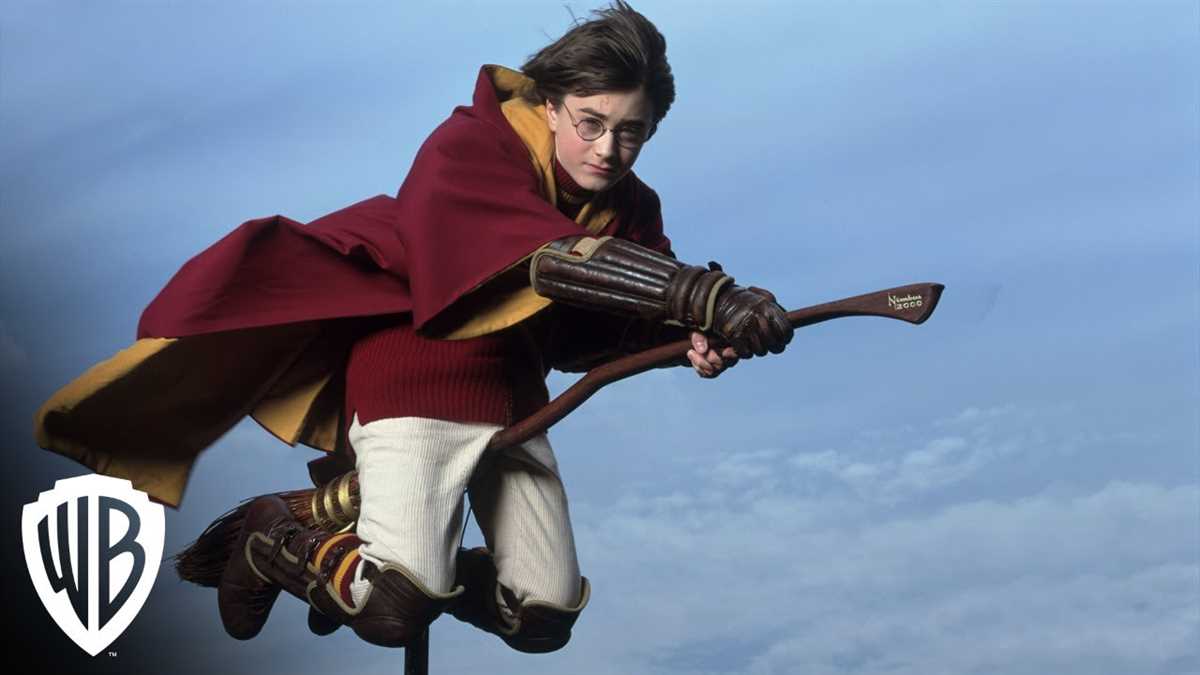
If you’re a fan of the Harry Potter series and have always dreamt of playing Quidditch, we have the perfect knitting pattern for you!
Quidditch, the famous wizarding sport played on broomsticks, captured the hearts of millions of fans around the world. One of the most iconic elements of the game is the Quidditch jumpers worn by the players. Now, you can bring a piece of the wizarding world into your own wardrobe by knitting your very own Harry Potter-inspired Quidditch jumper.
This knitting pattern will guide you through the process of creating a cozy and stylish jumper that resembles the ones worn by the Hogwarts Quidditch team. The pattern includes step-by-step instructions, useful tips, and color charts, making it suitable for knitters of all skill levels.
Whether you’re a Gryffindor, Slytherin, Hufflepuff, or Ravenclaw, you can customize your jumper to match your Hogwarts house colors. With this pattern, you’ll be able to show your love for Harry Potter and the world of wizardry while staying warm and fashionable.
Why Knit a Harry Potter Quidditch Jumper?
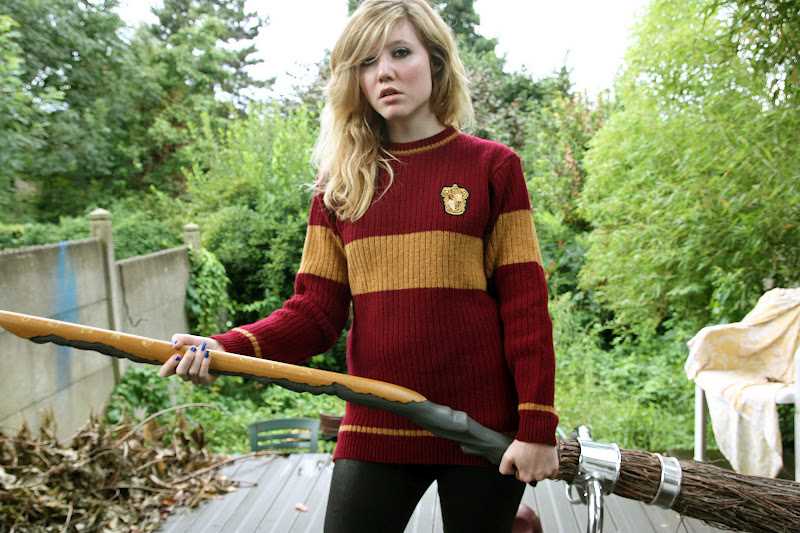
The world of Harry Potter has captured the hearts and imaginations of millions of fans around the world. From its magical spells to its enchanting creatures, the Harry Potter series has become a beloved part of popular culture. One iconic element of the wizarding world is the game of Quidditch, a fast-paced sport played on broomsticks. A key part of Quidditch attire is the jumper, which displays the player’s team colors and serves as a symbol of their dedication to the game.
Knitting a Harry Potter Quidditch jumper allows fans to show their love for the series in a unique and creative way. By recreating the famous jumper worn by Harry and his teammates, knitters can feel a sense of connection to the magical world they adore. Knitting is not only a fun and relaxing hobby, but it also allows for personalization and customization. Fans can choose their favorite team colors, add their initials or even incorporate the iconic Hogwarts crest into their jumper design.
Furthermore, knitting a Harry Potter Quidditch jumper can be a fulfilling and rewarding project. The jumper pattern typically involves more advanced knitting techniques, such as colorwork and cable knitting, which can be a fun challenge for experienced knitters. The process of creating something from start to finish can bring a sense of accomplishment and pride. Once completed, the jumper can be worn with pride or showcased as a treasured collector’s item among other Harry Potter memorabilia.
Overall, knitting a Harry Potter Quidditch jumper is a way for fans to express their love for the series, engage in a creative and fulfilling hobby, and create a unique piece of clothing that reflects their personal style. Whether you’re a die-hard Harry Potter fan or simply looking for a new knitting project, a Quidditch jumper is a perfect choice to combine fandom and craft.
The Magic of Quidditch
Quidditch, the beloved magical sport played in the world of Harry Potter, has captured the imaginations of fans worldwide. This high-flying game combines elements of soccer, rugby, and dodgeball, creating a fast-paced and exhilarating experience for players and spectators alike.
The thrill of Quidditch lies in its unique and magical elements. Players soar through the air on broomsticks, chasing after the Golden Snitch, a small winged ball that can change its speed and direction at will. The Quaffle, a red leather ball, is used to score points by throwing it through the opposing team’s hoops. Bludgers, enchanted iron balls, are aimed at players to disrupt their gameplay, adding an element of danger and suspense to the game.
Quidditch is not just about physical prowess, but also requires strategy and teamwork. Each team consists of seven players, who are assigned different positions. The Seeker’s role is to catch the Golden Snitch, earning their team 150 points and ending the game. The Chasers and Keepers work together to score goals with the Quaffle, while the Beaters defend their teammates and aim to knock the Bludgers towards the opposing team.
The magical nature of Quidditch extends beyond the gameplay itself. Each team has its own unique colors, mascot, and cheering section, creating a sense of camaraderie and unity. The atmosphere in the stands is electric, with fans passionately cheering their teams on and waving flags and banners. Quidditch has become a symbol of unity and community in the wizarding world, bringing people from different backgrounds together in celebration of the sport they love.
From the iconic Hogwarts houses to international tournaments, Quidditch has become an integral part of the Harry Potter universe. It represents the spirit of bravery, teamwork, and perseverance that resonates with fans of all ages. Whether you’re flying through the air or cheering from the stands, the magic of Quidditch brings joy and excitement to all who embrace it.
Show Your Harry Potter Fandom
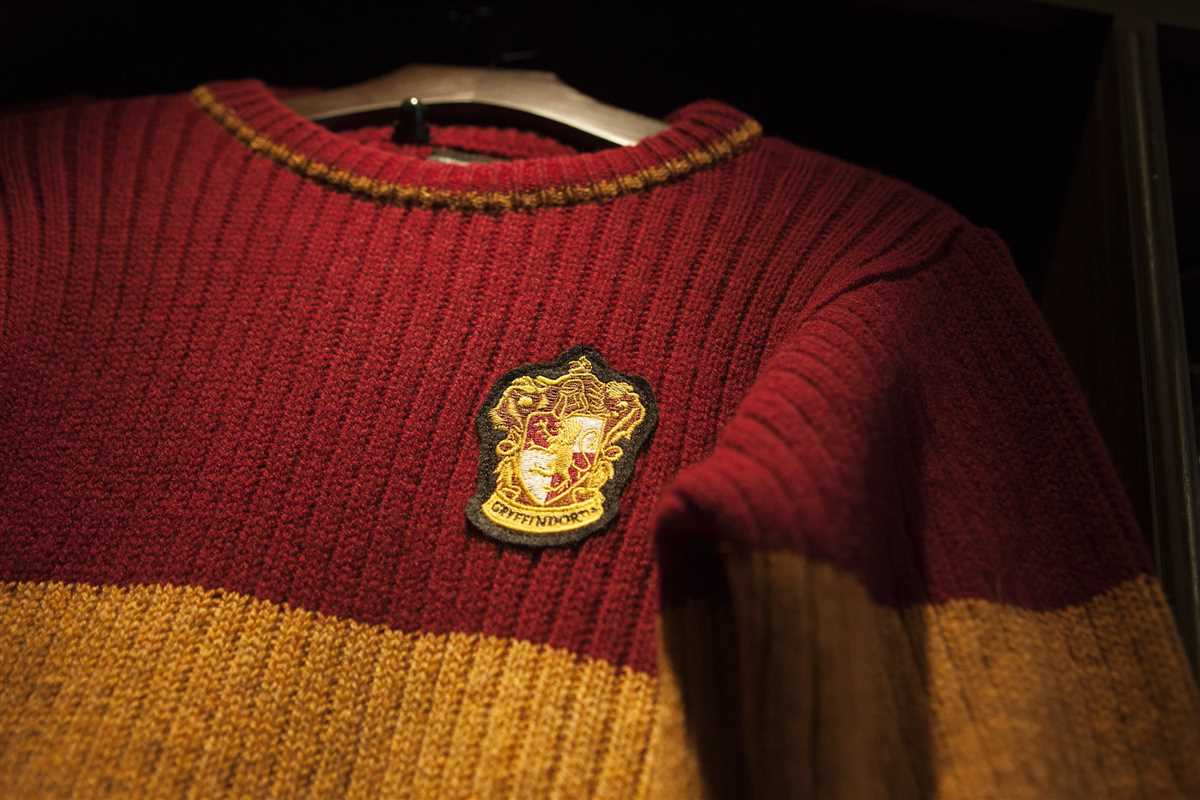
If you’re a die-hard Harry Potter fan, there are many ways to show off your love for the wizarding world. From clothing to accessories, there are numerous options to display your fandom. One popular choice is the iconic Harry Potter Quidditch jumper, perfect for keeping you warm and stylish while representing your favorite Hogwarts house.
To truly embrace your inner wizard, why not try knitting your own Harry Potter Quidditch jumper? With the right pattern and some dedication, you can create a one-of-a-kind piece that showcases your love for the series. Whether you’re a Gryffindor, Slytherin, Hufflepuff, or Ravenclaw, knitting your own Quidditch jumper allows you to customize the colors and design to match your house. Plus, knitting can be a relaxing and enjoyable way to spend your time, giving you a chance to fully immerse yourself in the magical world of Harry Potter.
Not into knitting? Don’t worry, there are plenty of other ways to show off your Harry Potter fandom. You can find a wide range of official merchandise, from t-shirts and hoodies to jewelry and home decor. Whether you prefer a subtle nod to the series or a bold statement piece, there’s something for everyone. And don’t forget about accessories like wands and broomsticks – the perfect addition to any Harry Potter fan’s collection.
In addition to clothing and merchandise, you can also celebrate your love for Harry Potter through themed events and gatherings. Attend a Harry Potter trivia night, join a Quidditch league, or host a movie marathon with fellow fans. These activities provide opportunities to connect with other enthusiasts and share your passion for the series. Don’t be afraid to let your Harry Potter flag fly – the wizarding community is always happy to welcome new members.
Materials Needed for the Project
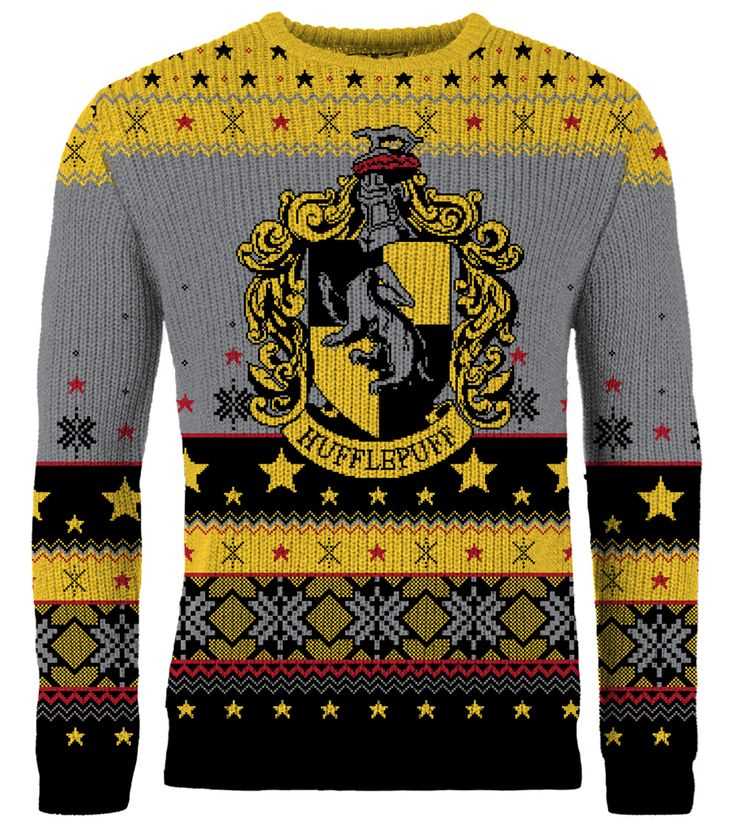
In order to knit a Harry Potter Quidditch jumper, you will need the following materials:
- Yarn: Choose a sport or worsted weight yarn in the colors of your choice, typically scarlet/red and gold for Gryffindor.
- Knitting Needles: Size 5 mm (US 8) straight or circular needles, whichever you prefer.
- Tapestry Needle: Used for weaving in ends and seaming.
- Stitch Markers: Optional, but helpful for marking different sections of the pattern.
- Scissors: Used for cutting the yarn.
- Measuring Tape: Helps to measure the correct size and length of the jumper.
- Knitting Pattern: A copy of the Harry Potter Quidditch jumper knitting pattern, which includes the stitch and row instructions.
- Buttons: If your pattern includes a button-up closure, you will need buttons of your choice.
These are the essential materials to complete the project. Make sure to have all the necessary items before starting to ensure a smooth knitting process. Additionally, feel free to customize the colors and materials according to your personal preferences and the house colors you wish to represent.
Yarn Selection
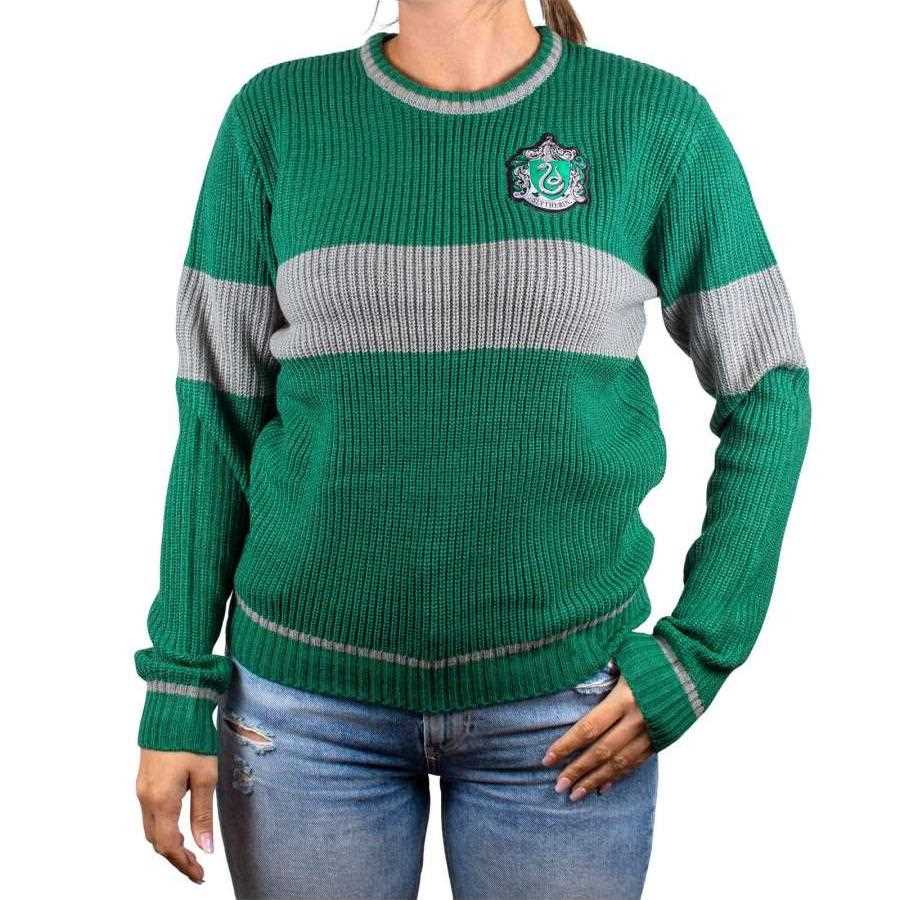
When it comes to knitting a Harry Potter Quidditch jumper, the choice of yarn is crucial. The jumper needs to be warm, comfortable, and durable, and it should also have the right color and texture to resemble the signature design of the Quidditch uniform.
Color: The most important aspect of the yarn selection is the color. The Quidditch jumper is traditionally knitted in the Gryffindor house colors of red and gold, but you can also choose other house colors or customize the design to match your preferences. Make sure to select yarn in the exact shades of the desired colors to achieve an authentic look.
Texture: The Quidditch jumper should have a sturdy texture that can withstand rough play on the Quidditch pitch. Look for yarn that is made from materials like wool or acrylic, which are known for their durability. These fibers will hold up well against wear and tear, and they will provide warmth during chilly Quidditch matches.
Weight: Consider the weight of the yarn when making your selection. The Quidditch jumper needs to be thick enough to provide warmth but not too bulky to hinder movement during gameplay. A medium-weight yarn, such as a worsted or aran weight, is typically a good choice for this type of project.
Gauge: Pay attention to the recommended gauge for the pattern and select a yarn that matches it. This will ensure that your finished jumper has the correct size and fit. If your gauge doesn’t match the pattern, you may need to adjust your needle size or choose a different yarn weight to obtain the desired measurements.
Quality: Finally, it’s important to choose a high-quality yarn that will create a professional-looking jumper. Look for yarn that is well-spun, has good stitch definition, and feels soft against the skin. Taking the time to select a quality yarn will result in a finished project that you can be proud of.
Knitting Needles
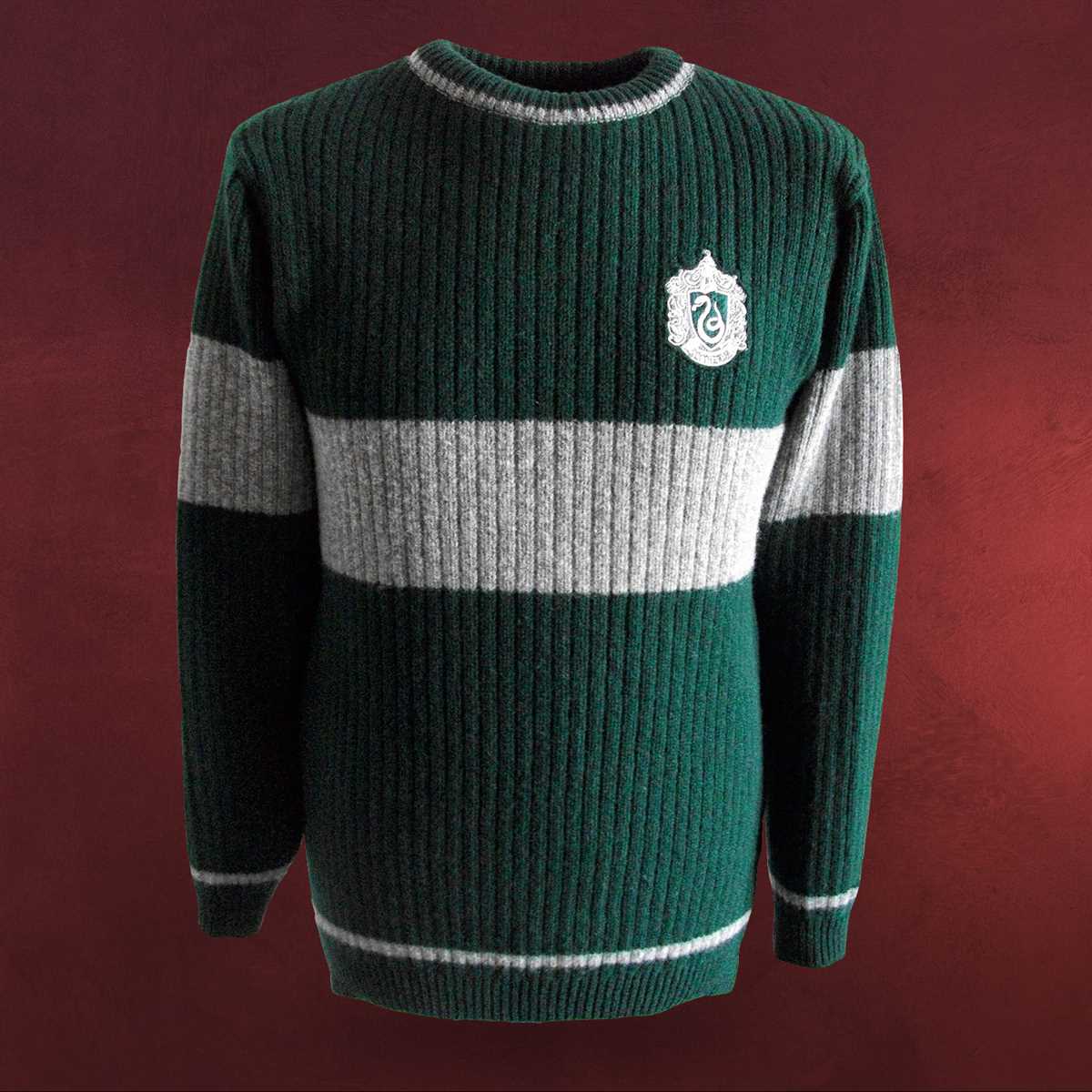
When it comes to knitting, the most essential tool is the knitting needles. These long, slender rods come in various sizes, materials, and styles to suit different knitting projects. The type of knitting needles you choose can have a significant impact on the outcome of your knitting project.
Size: Knitting needles are available in different sizes, typically measured in millimeters or US sizes. The size of your knitting needles determines the gauge or the tightness of your stitches. Larger needles create looser stitches, while smaller needles produce tighter stitches. It’s crucial to select the right needle size according to the pattern instructions to achieve the desired dimensions and tension.
Material: Knitting needles can be made from a variety of materials, including metal, wood, plastic, and bamboo. Each material has its own benefits and attributes. Metal needles, such as aluminum or stainless steel, are lightweight, durable, and have a smooth surface that allows the yarn to glide effortlessly. Wood and bamboo needles provide a warmer, natural feel, and are ideal for those who prefer a slower, more calming knitting experience. Plastic needles are lightweight and inexpensive, making them suitable for beginners.
- Styles: Knitting needles come in different styles, including straight needles, circular needles, and double-pointed needles. Straight needles, also known as single-pointed needles, are the most common type and are traditionally used for flat knitting. Circular needles consist of two needle tips connected by a flexible cable and are versatile for both flat and circular knitting. Double-pointed needles are shorter needles with points on both ends, ideal for knitting in the round or smaller projects like socks and gloves.
- Care and Maintenance: To ensure the longevity of your knitting needles, it’s important to take proper care of them. Clean them regularly with a mild soap and warm water, and dry them thoroughly before storing. Avoid excessive bending or dropping, as it can damage the needles. Invest in a needle case or organizer to keep your needles organized and prevent them from becoming tangled or lost.
- Choosing the Right Needles: When selecting knitting needles, consider the type of yarn you are using, the project you are working on, and your personal preference. Experiment with different materials and sizes to find the needles that feel most comfortable and produce the desired results. With the right knitting needles in hand, you can embark on endless knitting adventures and create beautiful, handmade garments, accessories, and more.
Additional Supplies
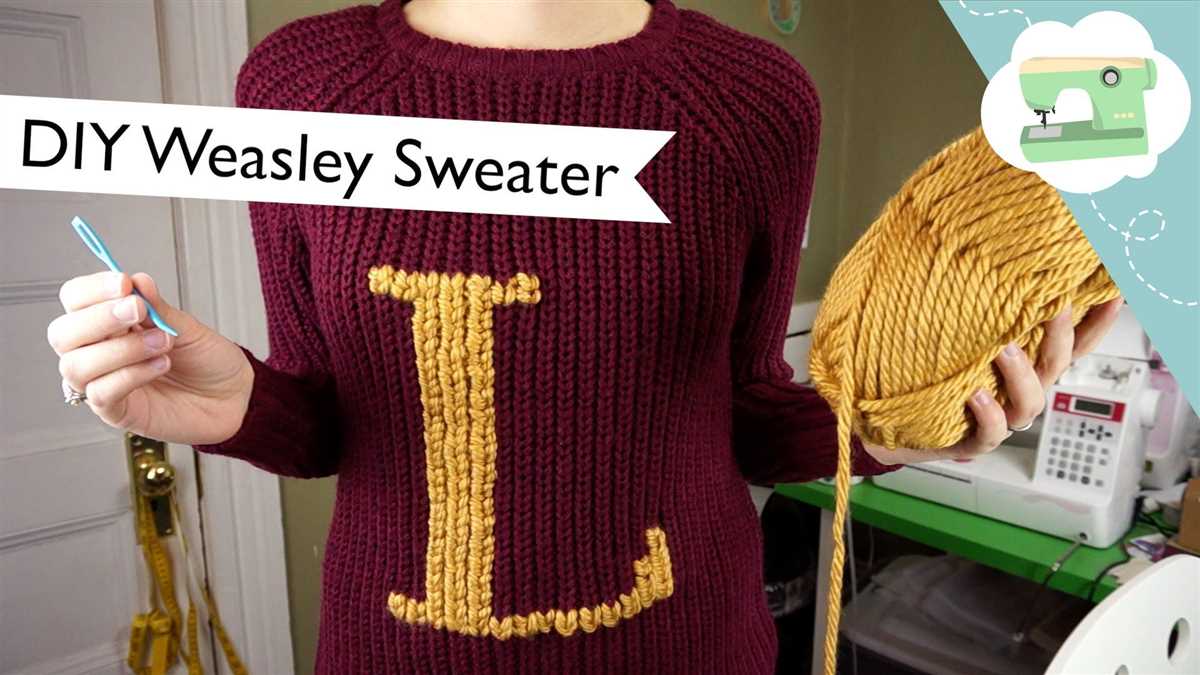
Aside from the yarn and knitting needles, there are a few additional supplies you will need to complete your Harry Potter Quidditch jumper. These supplies will help add the finishing touches and ensure that the final product is true to the iconic design.
1. Stitch markers
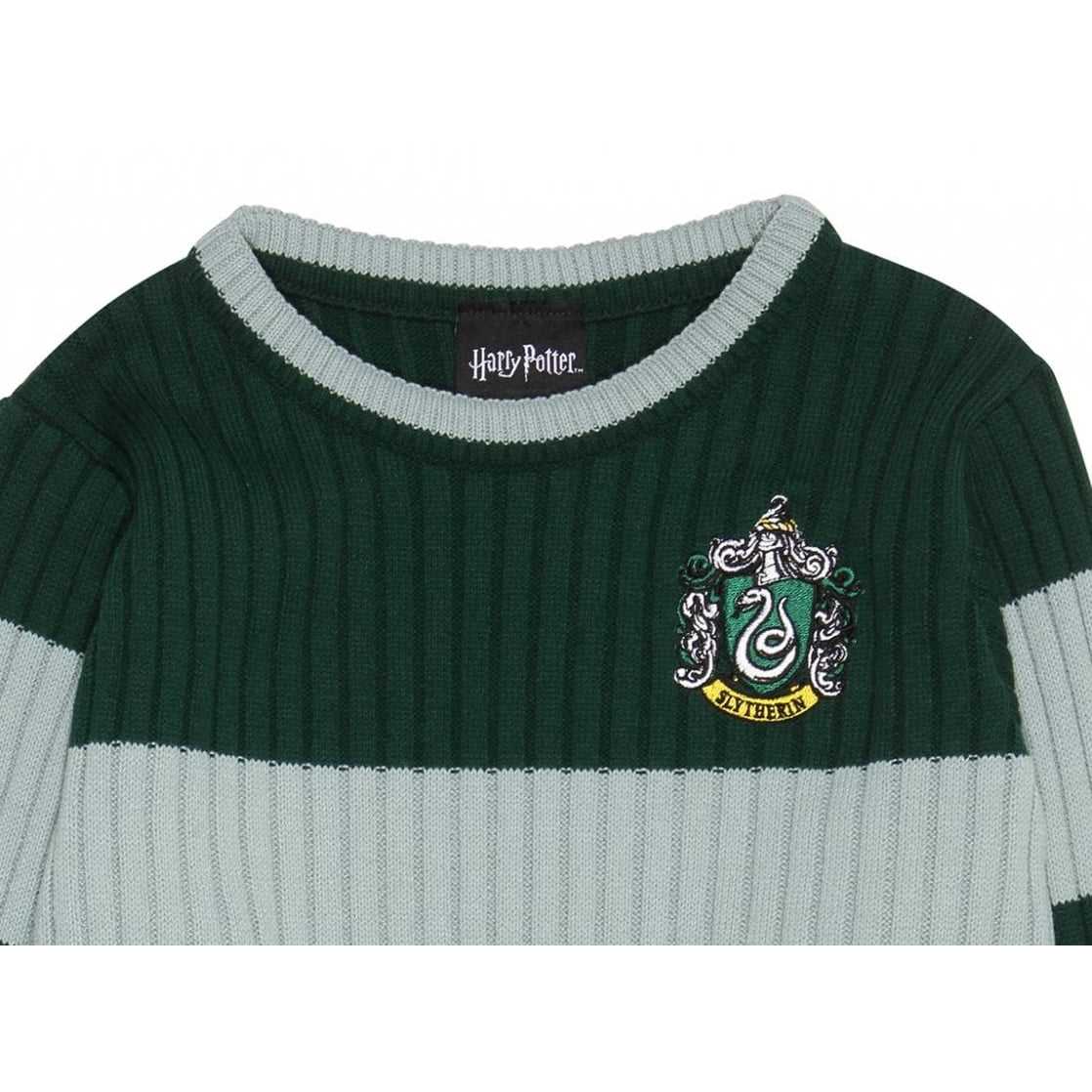
Stitch markers are essential for keeping track of specific sections or stitches in your knitting pattern. They can be placed on the knitting needles to mark specific points or used as removable markers on the knitted fabric. In the case of the Harry Potter Quidditch jumper, stitch markers can be used to identify the different sections of the jumper, such as the sleeves, body, and neckline.
2. Darning needle
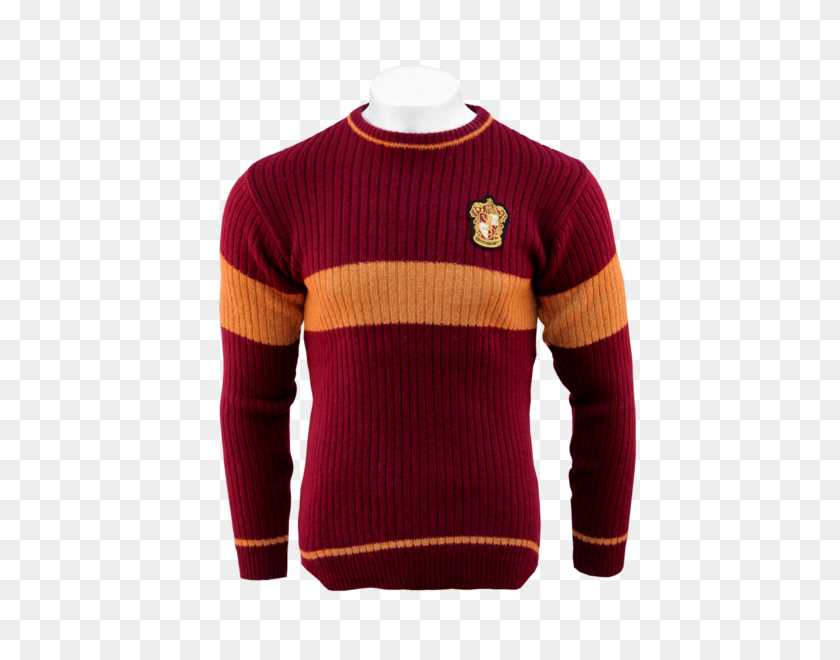
A darning needle will be needed for weaving in loose ends and finishing off the jumper. This needle has a large eye and a blunt end, making it suitable for sewing in yarn ends and seaming together different sections of the jumper. It is important to choose a darning needle that is the appropriate size and shape for your chosen yarn weight.
3. Embroidery thread
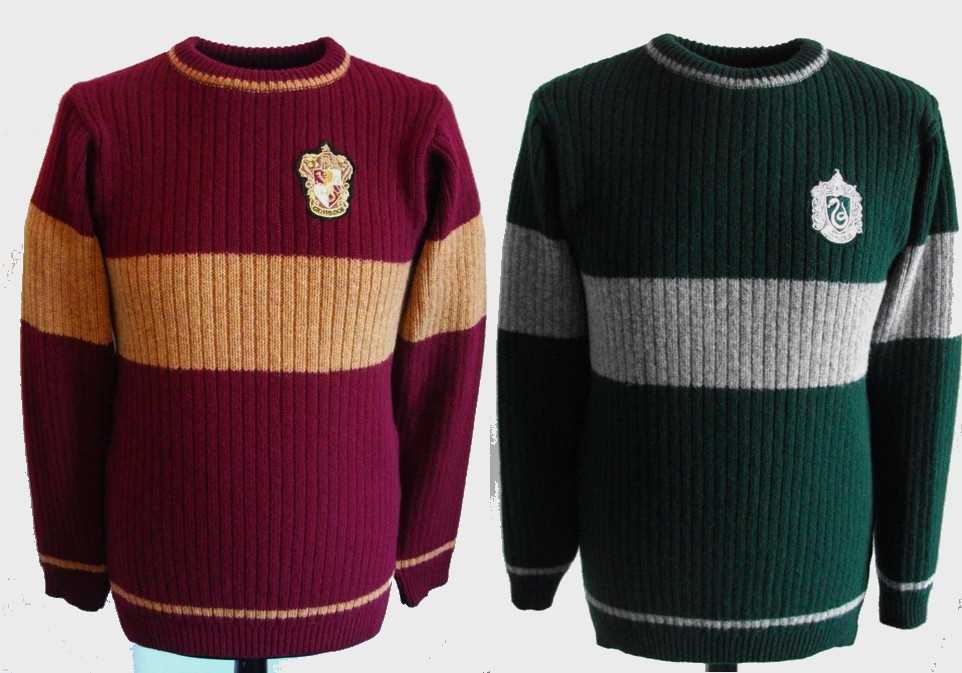
Embroidery thread in contrasting colors will be needed to create the Quidditch emblem on the front of the jumper. The emblem typically consists of the Hogwarts house crest and any additional details, such as the Quidditch balls or broomstick. Embroidery thread is typically made of cotton or silk and is available in a wide range of colors.
4. Buttons
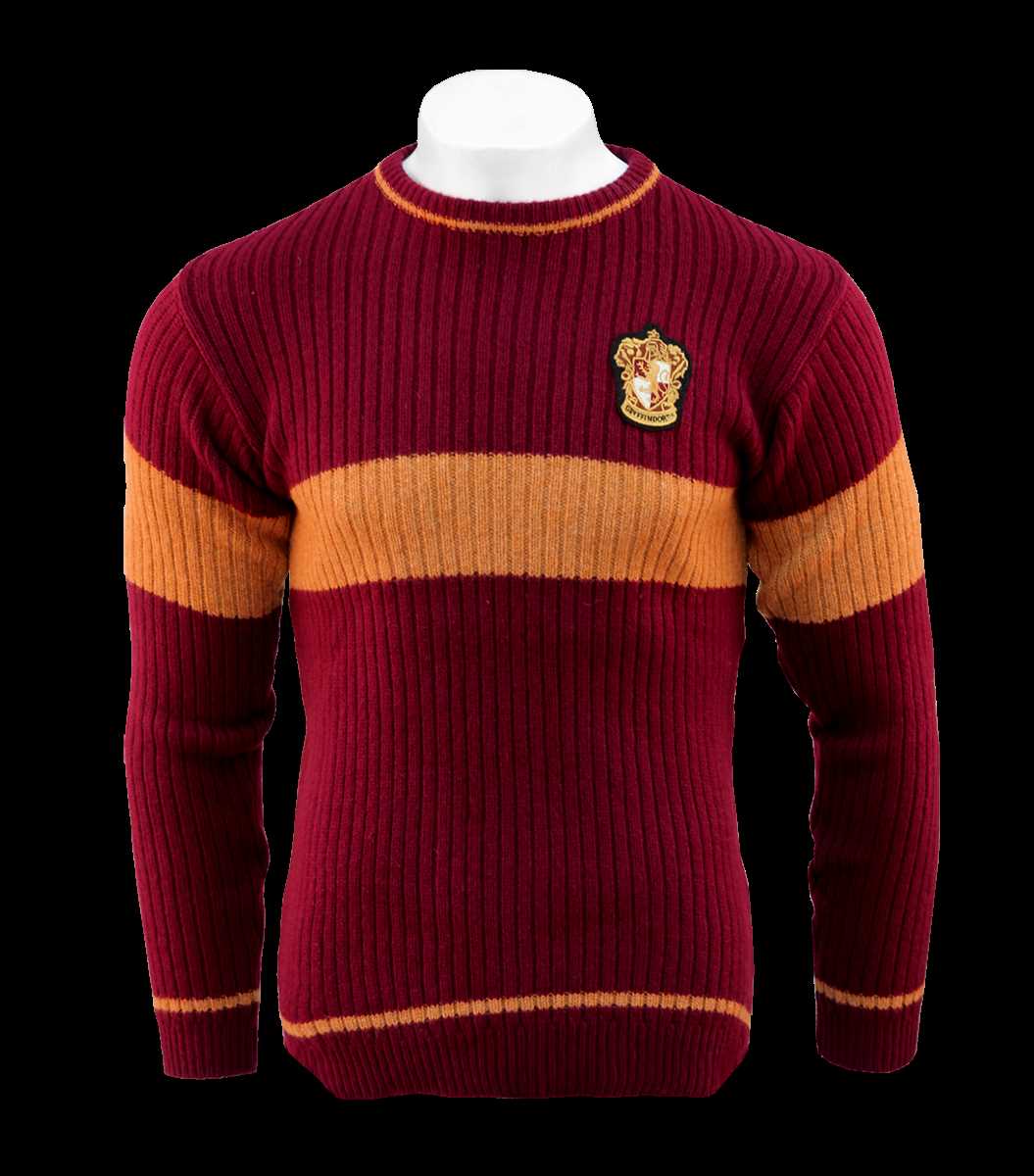
If the Quidditch jumper pattern includes a button closure, you will need to purchase buttons that match the style and size specified in the pattern. Buttons can be made of plastic, wood, metal, or other materials and can come in various shapes and sizes. It is important to choose buttons that complement the overall design of the jumper.
5. Optional: Pom-pom maker
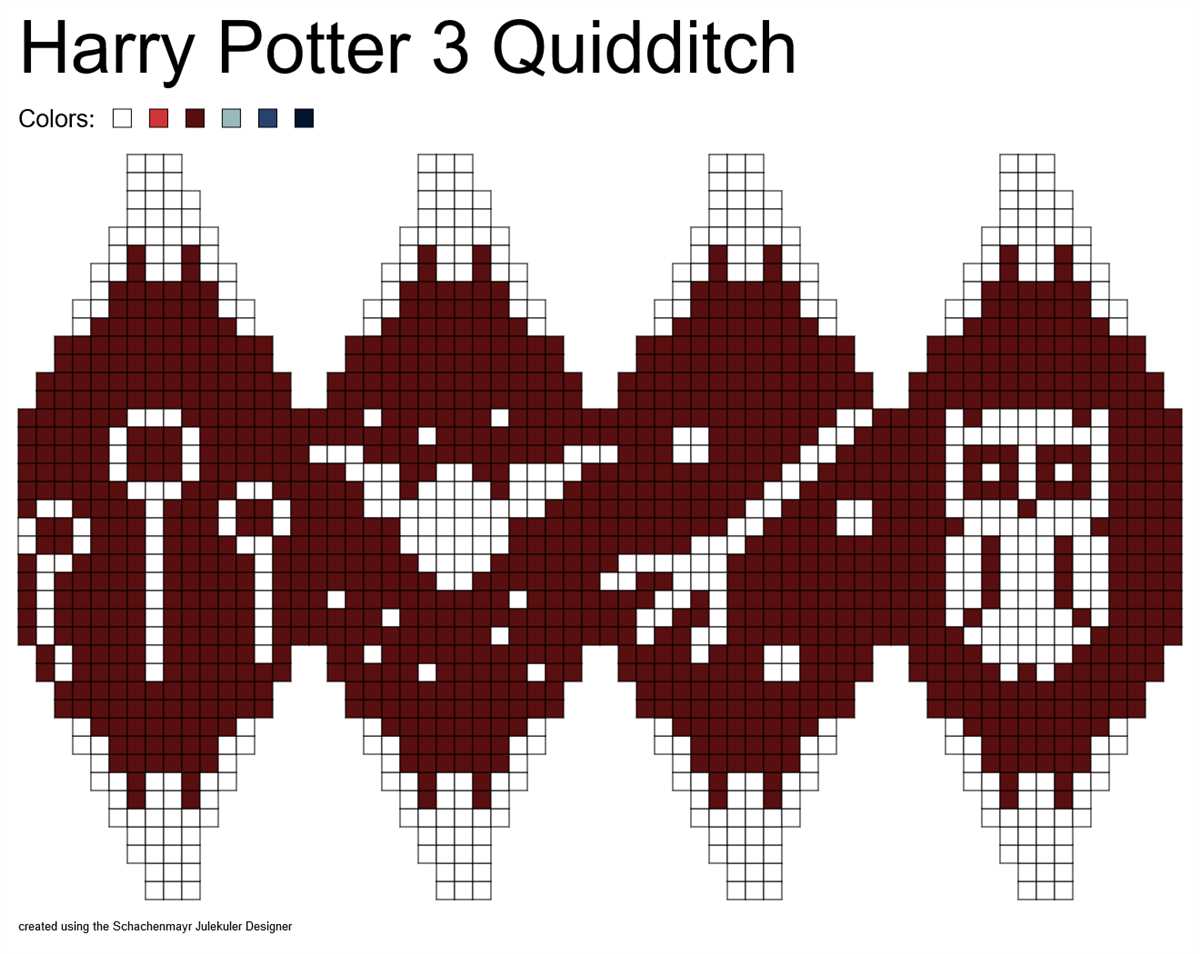
If you want to add a decorative touch to the jumper, you can use a pom-pom maker to create pom-poms in the Hogwarts house colors. These pom-poms can be attached to the jumper at the corners of the neckline or anywhere else you desire. A pom-pom maker is a handy tool that helps create evenly-sized and fluffy pom-poms with ease.
With these additional supplies, you will have everything you need to complete your Harry Potter Quidditch jumper and bring a touch of magic to your knitting.
Understanding the Knitting Pattern
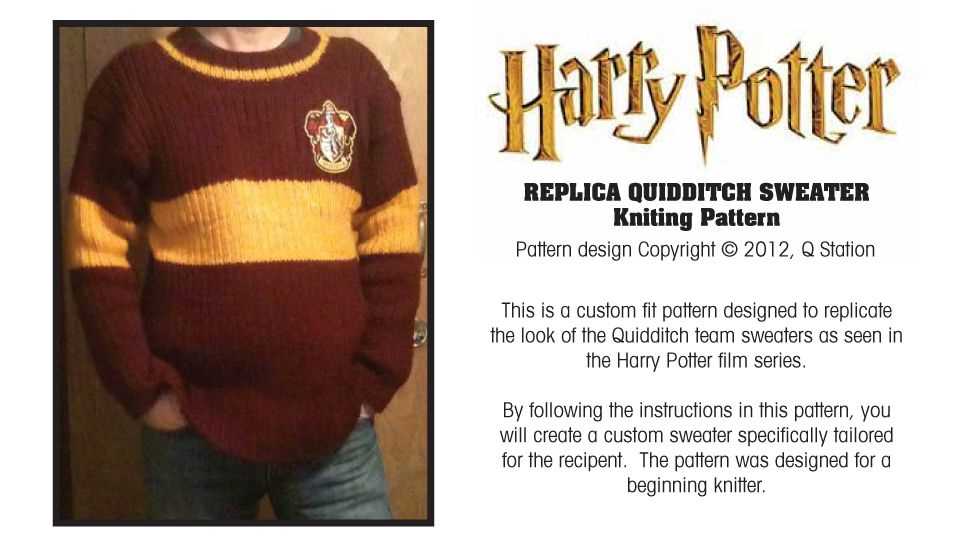
Knitting is a popular craft that allows people to create beautiful and cozy garments. One of the most sought-after patterns is the Harry Potter Quidditch Jumper. To successfully knit this pattern, it is important to understand the instructions and techniques involved.
Key Requirements: Before starting the knitting process, it is important to gather all the necessary materials. The Harry Potter Quidditch Jumper pattern typically requires a specific type of yarn, typically medium weight, and specific knitting needles, usually in size 4 or 5. Additionally, it is important to have a set of stitch markers, a tapestry needle, and a pair of scissors.
Instructions: The knitting pattern for the Harry Potter Quidditch Jumper typically consists of several sections, including the front, the back, and the sleeves. Each section will have its own set of instructions that need to be followed carefully. These instructions may include various knitting techniques, such as casting on, knitting, purling, increasing, and decreasing stitches.
- Casting on: This is the process of creating the first row of stitches on the knitting needle.
- Knitting: In this technique, the knitter uses two needles to create interlocking loops.
- Purling: This is the process of creating a row of reversed stitches, creating a different texture on the fabric.
- Increasing: This technique involves adding extra stitches to the fabric, typically by making yarn overs or knitting in the front and back of a stitch.
- Decreasing: In contrast, decreasing involves removing stitches from the fabric, usually by knitting two stitches together or slipping stitches.
Finishing: Once all the sections of the Quidditch Jumper have been knitted according to the pattern instructions, it is important to finish the project properly. This typically involves sewing the different sections together using a tapestry needle and tidying up any loose ends. Additionally, blocking the finished jumper may be necessary to ensure the fabric lays flat and the stitches appear even.
By understanding the knitting pattern and following the instructions diligently, you can successfully create your very own Harry Potter Quidditch Jumper, emulating the style of your favorite wizarding world character. Happy knitting!
Reading the Chart
One of the most important steps in knitting the Harry Potter Quidditch jumper is understanding how to read the chart. The chart is a visual representation of the knitting pattern, showing each stitch and color change. It is essential to follow the chart accurately to create the desired design.
Color Coding: The chart will use different colors or symbols to represent different stitches or colors in the knitting pattern. Each color or symbol corresponds to a specific action, such as knit, purl, or change color. Pay close attention to the color coding legend provided with the chart.
Rows and Stitches: The chart is divided into rows and stitches. Each square on the chart represents one stitch, and each row represents a different row in your knitting project. Start at the bottom right corner of the chart and read from right to left for the right side and left to right for the wrong side rows.
Reading the Chart: To read the chart, start at the bottom right corner and locate the first stitch on the first row. Follow the color coding and symbols to determine the action required for each stitch. Work your way across the row, following the chart from right to left.
Repeating Rows: In some patterns, rows are repeated multiple times. The chart will indicate how many times to repeat a specific row or set of rows. Pay attention to any repeat symbols or instructions provided in the chart.
Tracking Progress: As you knit, it can be helpful to use a pencil or highlighter to mark off each row as you complete it on the chart. This can help you keep track of where you are in the pattern and prevent any mistakes or confusion.
Practice and Patience: Reading and following a knitting chart can take some practice and patience, especially if you are new to working with charts. Take your time, refer back to the legend, and double-check your work as you go along. With practice, navigating the chart will become easier and more natural.
Following the Written Instructions
When knitting a Harry Potter Quidditch jumper, it is important to carefully follow the written instructions provided. These instructions will outline the specific steps and techniques required to create an accurate and authentic jumper. Paying close attention to the details and following the instructions step by step will help ensure that the final product turns out as desired.
Starting with the right materials: Before beginning the knitting process, gather all the necessary materials listed in the instructions. This may include specific types and colors of yarn, knitting needles, and any additional notions or accessories. Ensuring that you have all the right materials on hand will set you up for success and prevent any interruptions in the knitting process.
Step-by-step knitting process:
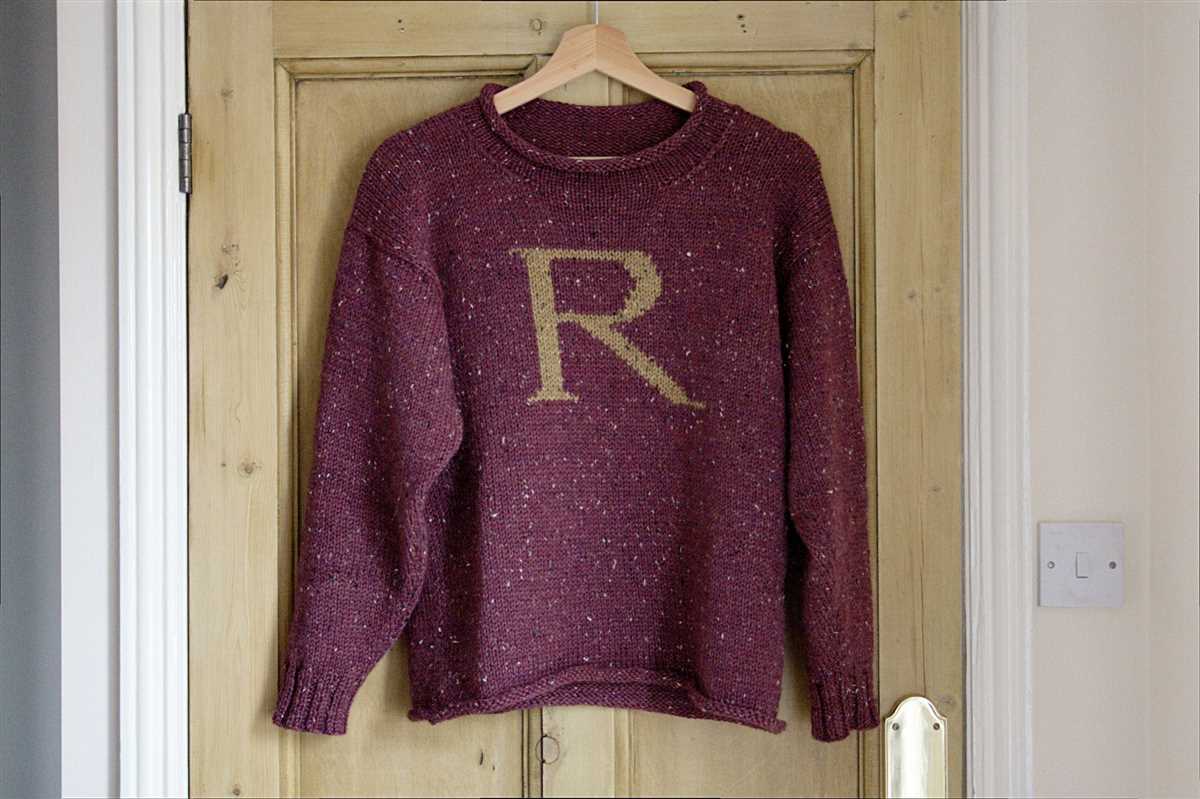
1. Read the instructions thoroughly: Before picking up your needles, take the time to carefully read through the instructions from start to finish. This will give you an understanding of the overall pattern and help you anticipate any challenges or complicated techniques that may arise.
2. Take note of gauge requirements: The instructions may include specific gauge requirements, which determine the size and fit of the finished jumper. It is important to carefully measure and swatch the recommended gauge before starting the main project. This will ensure that the jumper will fit properly.
3. Follow stitch abbreviations: The written instructions may use stitch abbreviations to simplify the pattern. Make sure to familiarize yourself with these abbreviations before starting. A key or legend is usually provided to explain each abbreviation and what stitch it corresponds to.
4. Break down the instructions into sections: The pattern may be divided into sections or paragraphs, each representing a different part of the jumper. Take the instructions one section at a time, following each directive and checking off completed steps as you go.
5. Keep track of rows and stitch counts: It is important to keep track of the number of rows and stitches as you progress through the pattern. This will help ensure that your knitting is consistent and that you are on track with the instructions.
By following the written instructions carefully, knitters can successfully create their own Harry Potter Quidditch jumpers. Taking the time to familiarize yourself with the pattern, gather the right materials, and diligently follow each step will result in a beautifully crafted and authentic jumper that any Harry Potter fan would be proud to wear.
Starting the Quidditch Jumper
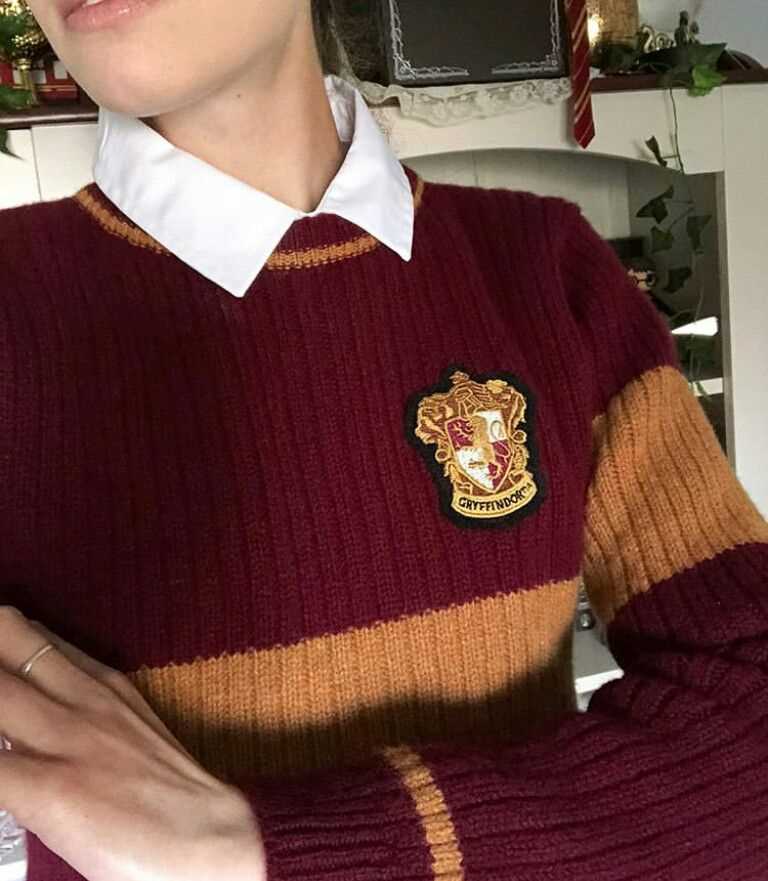
Making a Quidditch jumper is a fun and challenging knitting project for any Harry Potter fan. Whether you’re a beginner or an experienced knitter, this pattern will guide you through the process of creating your very own Quidditch jumper.
Gathering the Materials:
- Yarn: Start by choosing a yarn that matches your desired colors for the jumper. It’s important to select a yarn that is both comfortable to wear and durable.
- Knitting Needles: You’ll need a set of knitting needles in the appropriate size for your chosen yarn.
- Pattern: Find a reliable knitting pattern that includes instructions for the Quidditch jumper design. There are many patterns available online or you can create your own.
- Tape Measure: This will be useful for measuring your progress and ensuring the jumper’s fit.
- Darning Needle: You’ll need a darning needle for weaving in ends and sewing any necessary seams.
Following the Pattern:
- Cast On: Start by casting on the required number of stitches as indicated in the pattern. This will typically involve creating a foundation row of stitches using the long-tail cast on method.
- Ribbing: Begin with the ribbing section of the jumper, which is usually worked in a combination of knit and purl stitches. This creates a stretchy and close-fitting band at the bottom of the jumper.
- Main Body: Once the ribbing is complete, follow the pattern to transition into the main body of the jumper. This may involve changing stitch patterns or introducing colorwork for any Quidditch-related designs.
- Sleeves: After completing the main body, work on the sleeves by following the instructions provided. This may include shaping the sleeves by decreasing stitches and creating a tapered fit.
- Finishing: Once the main body and sleeves are complete, finish off the jumper by weaving in any loose ends and sewing together any necessary seams. Take the time to try on the jumper and make any final adjustments to ensure the perfect fit.
With these steps and materials in hand, you’ll be well on your way to creating your very own Quidditch jumper. Remember to take your time, follow the pattern closely, and enjoy the knitting process. Soon enough, you’ll have a cozy and stylish jumper that any Harry Potter fan would be proud to wear!
Casting On
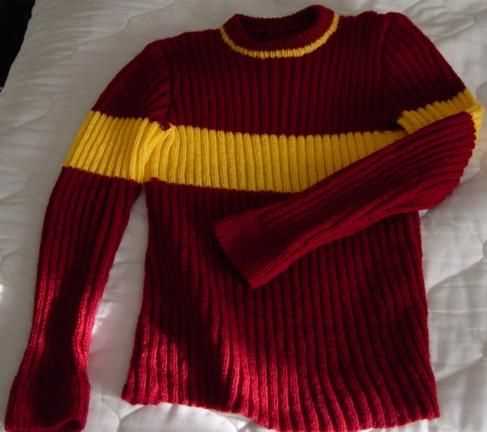
A crucial step in knitting the Harry Potter Quidditch jumper is casting on. This is the process of creating the first row of stitches on your knitting needles. In this pattern, the casting on method used is the long-tail cast on.
Long-tail cast on: To begin, leave a long tail of yarn, approximately three times the width of the piece you are knitting. Make a slipknot by creating a loop with the tail end of the yarn and pulling the working yarn (the end attached to the ball) through the loop. Place this slipknot onto one of the knitting needles.
Hold the knitting needles together in your right hand, with the slipknot on the needle closest to your thumb. Using your left hand, bring the yarn over your index finger and then under your middle finger. Hold the tail end of the yarn between your pinky and ring finger to keep it taut.
Now, it’s time to start casting on the stitches. Insert the knitting needle coming from your thumb between the strands of yarn on your index and middle fingers, going from bottom to top. Bring the needle over the top of the yarn on your index finger and then back under it. This creates a loop of yarn on the needle.
Slide this loop over your index finger and pull it tight. Repeat this process, each time creating a new loop and sliding it onto the needle until you have cast on the required number of stitches for your pattern. Remember to keep the tension even, not too tight or too loose, as it will affect the overall appearance and fit of your jumper.
Knitting the Ribbing
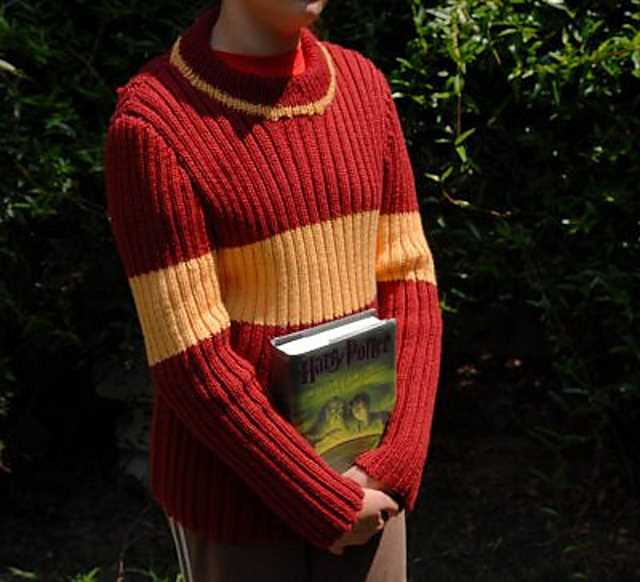
In order to create the ribbing for the Harry Potter Quidditch jumper, you will need to switch to a smaller needle size. This will help create a tighter and more elastic ribbing.
Begin by casting on the required number of stitches for the ribbing section. The pattern will specify how many stitches you need to cast on.
Next, you will work in a *k1, p1* ribbing pattern for the desired number of rows. This means that for each row, you will knit one stitch, then purl one stitch, and repeat this pattern across the row.
To complete the ribbing section, you will need to bind off the stitches. This can be done using a regular bind off or a stretchy bind off, depending on the desired fit of the jumper. Make sure to follow the instructions in the pattern for the specific bind off method.
Summary:
- Switch to smaller needle size for the ribbing.
- Cast on the required number of stitches.
- Work in a *k1, p1* ribbing pattern for the desired number of rows.
- Bind off the stitches using the specified method in the pattern.
By following these steps, you will be able to create a beautifully textured ribbing for your Harry Potter Quidditch jumper. Enjoy your knitting journey!
Q&A:
Where can I find a Harry Potter quidditch jumper knitting pattern?
You can find a Harry Potter quidditch jumper knitting pattern on various websites and online platforms. Some popular options include Ravelry, Etsy, and Pinterest. You can also try searching for it on knitting forums or groups.
Is there a specific yarn I should use for knitting a Harry Potter quidditch jumper?
There is no specific yarn that you have to use for knitting a Harry Potter quidditch jumper. However, it is recommended to use a medium weight yarn such as worsted or aran weight in the colors specified in the pattern to achieve the desired look.
How difficult is it to knit a Harry Potter quidditch jumper?
The difficulty level of knitting a Harry Potter quidditch jumper can vary depending on your knitting skills and experience. It involves knitting in the round, colorwork, and some shaping for the sleeves and neckline. If you are an intermediate or advanced knitter, you should be able to handle this project.
Can I modify the Harry Potter quidditch jumper knitting pattern?
Yes, you can modify the Harry Potter quidditch jumper knitting pattern to suit your preferences. You can adjust the size, change the colors, or even add your own personal touches. Just make sure to keep track of your modifications and adjust the stitch counts accordingly.
Are there any video tutorials available for knitting a Harry Potter quidditch jumper?
Yes, there are several video tutorials available online that can guide you through the process of knitting a Harry Potter quidditch jumper. YouTube is a great resource for finding such tutorials. You can search for specific keywords like “Harry Potter quidditch jumper knitting tutorial” to find relevant videos.
Where can I find a Harry Potter Quidditch jumper knitting pattern?
You can find Harry Potter Quidditch jumper knitting patterns on various crafting websites, such as Ravelry or Etsy. Additionally, some dedicated Harry Potter fan sites may also offer free or paid knitting patterns for the jumper.
What materials do I need to knit a Harry Potter Quidditch jumper?
To knit a Harry Potter Quidditch jumper, you will need yarn in the desired colors (usually a main color for the body and a contrasting color for the stripes), knitting needles in the appropriate size, a tapestry needle for weaving in ends, and any desired embellishments such as buttons or patches.